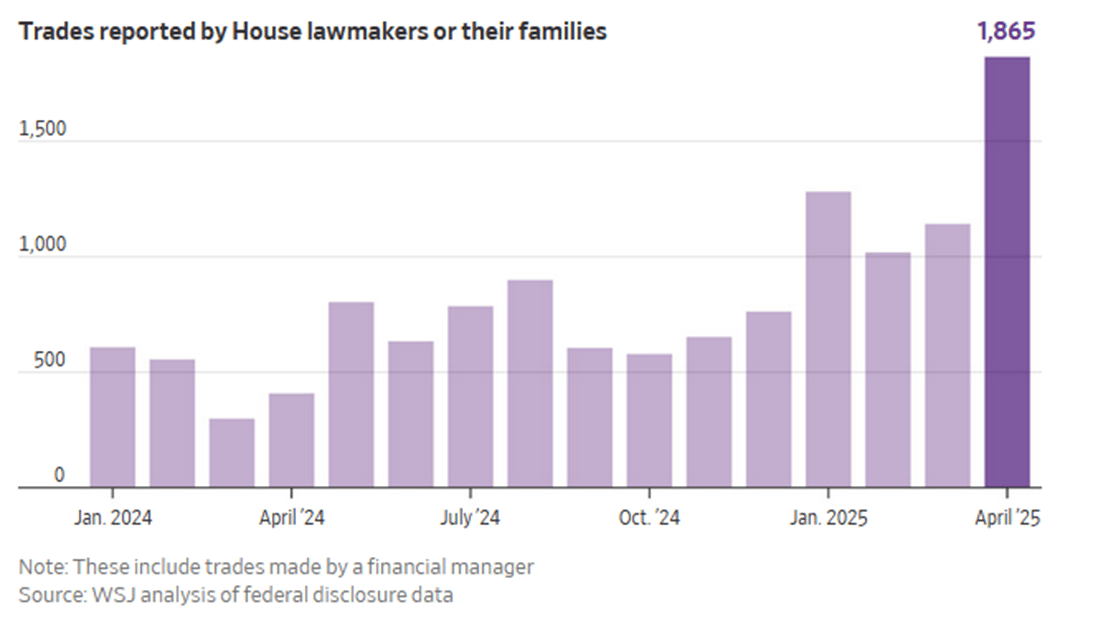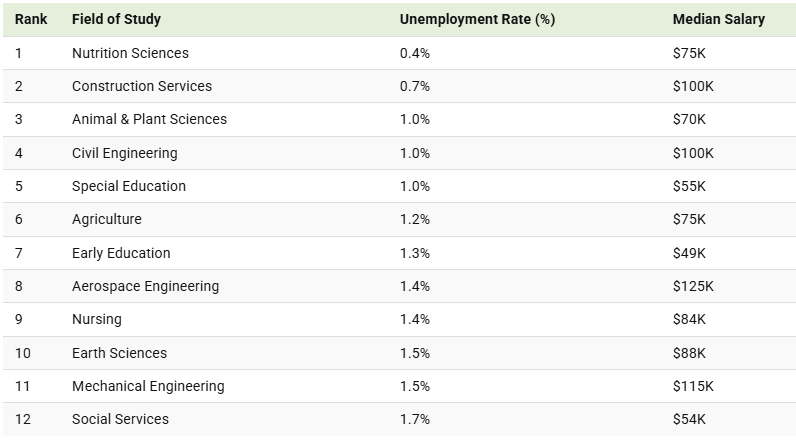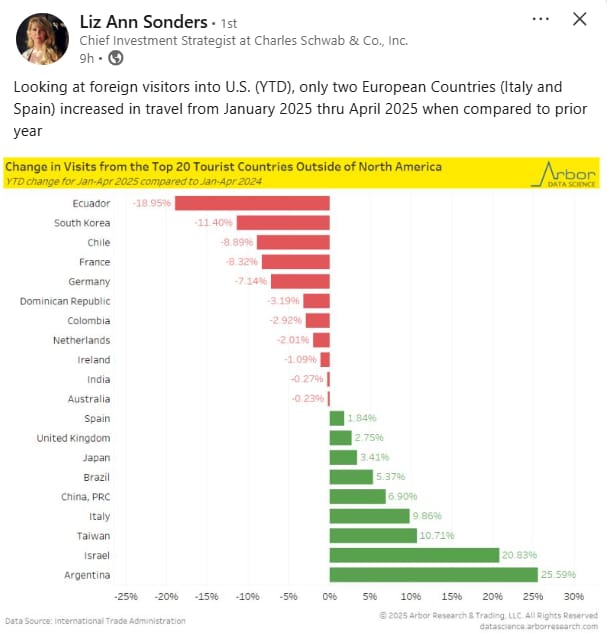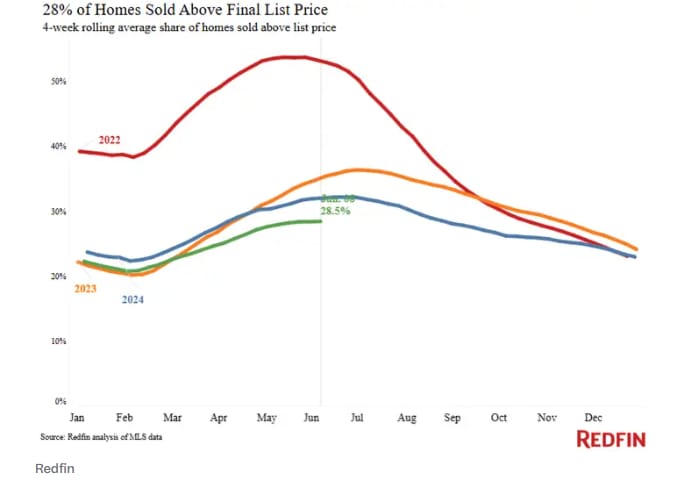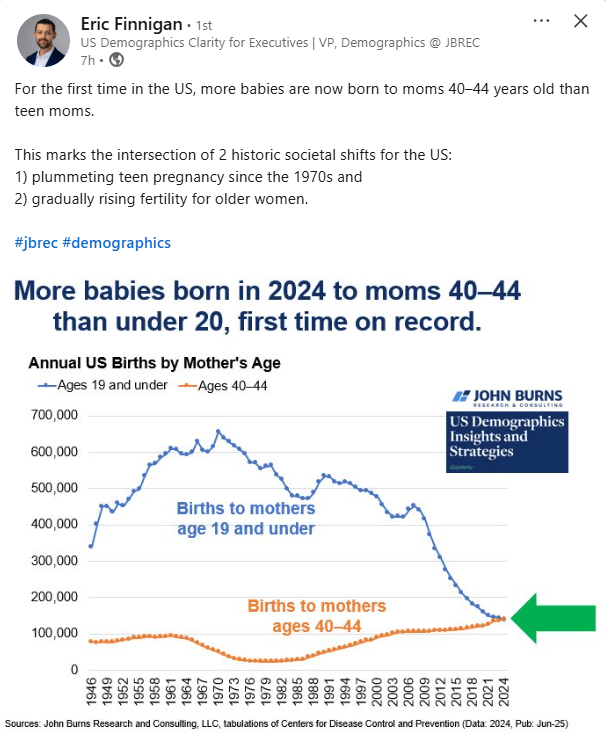- TOPLEY'S TOP 10
- Posts
- Smarter in 10 Minutes
Smarter in 10 Minutes
ChatGPT Wide Lead
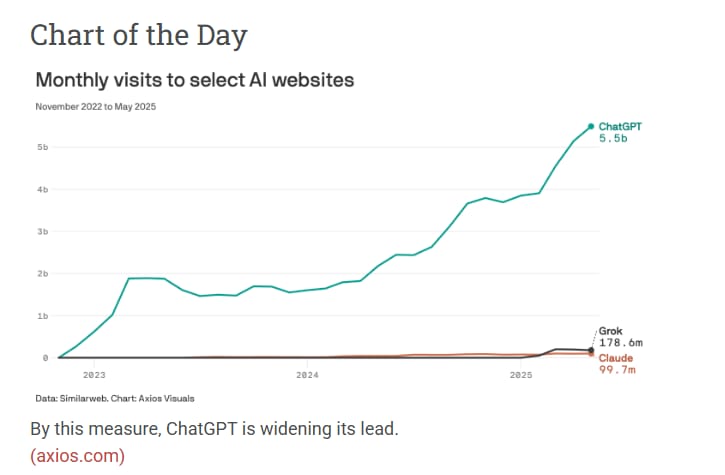
….
1. American Politician Families Trade Stocks Like Hedge Funds During Liberation Day Market Volatility
DAY TRADERS- As markets tanked in the wake of President Trump’s “Liberation Day” tariffs in early April, members of Congress and their families made hundreds of stock trades, shining a spotlight on a controversial practice that some lawmakers have pushed to ban. From April 2, when Trump launched sweeping tariffs to April 8, the day before he paused many of them, more than a dozen House lawmakers and their family members made more than 700 stock trades, according to a WSJ analysis. The trading took place during one of the wildest stretches for global financial markets of the past decade. The S&P 500 tanked more than 4.5% for two consecutive sessions shortly after Liberation Day and recorded the biggest fall since the March 2020 market crash. More than $6 trillion in market value vanished.
…
…
…
…
…
…
…
8. Real Estate Friday
Number of Homes Selling Above List Price Coming Down
What Does Your Mortgage Really Cost?
First Time More Babies Born to Moms 40-44 vs. Teens
…
9. World fertility rates in 'unprecedented decline', UN says
Via the BBC: In a survey of 14,000 people, one in five respondents said they haven't had or expect they won't have the number of children they want
Namrata Nangia and her husband have been toying with the idea of having another child since their five-year-old daughter was born.
But it always comes back to one question: 'Can we afford it?'
She lives in Mumbai and works in pharmaceuticals, her husband works at a tyre company. But the costs of having one child are already overwhelming - school fees, the school bus, swimming lessons, even going to the GP is expensive.
It was different when Namrata was growing up. "We just used to go to school, nothing extracurricular, but now you have to send your kid to swimming, you have to send them to drawing, you have to see what else they can do."
According to a new report by the United Nations Population Fund (UNFPA), the UN agency for reproductive rights, Namrata's situation is becoming a global norm.
The agency has taken its strongest line yet on fertility decline, warning that hundreds of millions of people are not able to have the number of children they want, citing the prohibitive cost of parenthood and the lack of a suitable partner as some of the reasons.
UNFPA surveyed 14,000 people in 14 countries about their fertility intentions. One in five said they haven't had or expect they won't have their desired number of children.
The countries surveyed - South Korea, Thailand, Italy, Hungary, Germany, Sweden, Brazil, Mexico, US, India, Indonesia, Morocco, South Africa, and Nigeria - account for a third of the global population.
They are a mix of low, middle and high-income countries and those with low and high fertility. UNFPA surveyed young adults and those past their reproductive years.
"The world has begun an unprecedented decline in fertility rates," says Dr Natalia Kanem, head of UNFPA.
"Most people surveyed want two or more children. Fertility rates are falling in large part because many feel unable to create the families they want. And that is the real crisis," she says.
"Calling this a crisis, saying it's real. That's a shift I think," says demographer Anna Rotkirch, who has researched fertility intentions in Europe and advises the Finnish government on population policy.
"Overall, there's more undershooting than overshooting of fertility ideals," she says. She has studied this at length in Europe and is interested to see it reflected at a global level.
She was also surprised by how many respondents over 50 (31%) said they had fewer children than they wanted.
The survey, which is a pilot for research in 50 countries later this year, is limited in its scope. When it comes to age groups within countries for example, the sample sizes are too small to make conclusions.
But some findings are clear.
In all countries, 39% of people said financial limitations prevented them from having a child.
The highest response was in Korea (58%), the lowest in Sweden (19%).
In total, only 12% of people cited infertility - or difficulty conceiving - as a reason for not having the number of children they wanted to. But that figure was higher in countries including Thailand (19%), the US (16%), South Africa (15%), Nigeria (14%) and India (13%).
"This is the first time that [the UN] have really gone all-out on low fertility issues," says Prof Stuart Gietel-Basten, demographer at the Hong Kong University of Science and Technology.
Until recently the agency focused heavily on women who have more children than they wanted and the "unmet need" for contraception.
Still, the UNFPA is urging caution in response to low fertility.
"Right now, what we're seeing is a lot of rhetoric of catastrophe, either overpopulation or shrinking population, which leads to this kind of exaggerated response, and sometimes a manipulative response," says Dr Kanem.
"In terms of trying to get women to have more children, or fewer."
She points out that 40 years ago China, Korea, Japan, Thailand and Turkey were all worried their populations were too high. By 2015 they wanted to boost fertility.
"We want to try as far as possible to avoid those countries enacting any kind of panicky policies," says Prof Gietel-Basten.
"We are seeing low fertility, population ageing, population stagnation used as an excuse to implement nationalist, anti-migrant policies and gender conservative policies," he says.
UNFPA found an even bigger barrier to children than finances was a lack of time. For Namrata in Mumbai that rings true.
She spends at least three hours a day commuting to her office and back. When she gets home she is exhausted but wants to spend time with her daughter. Her family doesn't get much sleep.
"After a working day, obviously you have that guilt, being a mom, that you're not spending enough time with your kid," she says.
"So, we're just going to focus on one."
…
10. The Neurobiology of Habits
Understanding the habits that control your life.
Key points
Habits form through rewards and repetition, not just willpower.
Repetition makes actions automatic, freeing up decision-making in the brain.
Dopamine motivates habit formation and reinforces repeated behaviors.
Nearly half our daily actions are habits, shaped by routine.
Via Psychology Today: Whether you are trying to quit smoking or eat more vegetables, changing your habits takes more than willpower. Habits are shaped by how your brain learns and makes decisions. A recent study found that we form habits through rewards and consistent repetition. Changing your habits can be hard, but repetition may be the key to maintaining a healthy routine.
How Habits Are Formed
It is easy to think of habits as behaviors that we can choose to start and stop at any time. We want to believe that we are in control of all our actions and preferences. In reality, habits are deeply ingrained patterns shaped by both our environment and how our brains learn over time.
Learning new habits happens slowly, often without you realizing it. When you first learn to drive a car, you consciously think about every action– checking your mirrors, monitoring the road, tracking your speed, and other actions. Over time, as your brain strengthens these neural pathways, driving starts to feel automatic. Once the habit is established, the brain’s “decision-making center” takes a backseat.
Forming a new habit can take anywhere from three weeks to several months, averaging about 70 days. The promise of a reward is often one of the biggest motivators. Knowing that something good awaits you on the other side releases dopamine into the brain. This “feel-good” chemical motivates you to keep going.
Not every habit gives you instant gratification. Daily habits like brushing your teeth or locking the door when you leave keep you healthy and safe, but they do not have an obvious payoff. It is just part of your routine. The more you do it, the more your brain gets used to the pattern, and it starts to feel effortless.
Habits Create Routine
Nearly 45 percent of our actions throughout the day are habits. You likely do not think about turning off the lights when you leave a room or putting on a seatbelt when you get into the car. Even the route you take to work or to school is automated. Habits also shape our preferences. If you always have a cup of coffee first thing in the morning, you may start to prefer coffee over tea. It may not necessarily taste better, it's just part of your routine.
According to Dr. Marcus Stephenson-Jones, a researcher at the University College London and lead author of this study, “Once you have developed a preference for a certain action, then you can bypass your value-based system and just rely on your default policy of what you've done in the past.” Habits allow the decision-making areas of the brain to take a break. If you visit a restaurant enough times, you may start defaulting on the same order because it is familiar and your brain does not have to decide whether you will like it.
Recently, the Swedish team discovered that our habits are influenced by two learning systems in the brain that work in parallel. The reward-based system, regulated by the release of dopamine in decision-making areas of the brain, teaches you to repeat behaviors that lead to good outcomes. The repetition-based system reinforces these habits into your routine. Until now, it was not clear what directs our brain to keep repeating these behaviors after the initial sense of reward fades.
What Mice Can Teach Us About Habit Formation
Observing mice learn new behaviors uncovered a key piece of the puzzle. The team trained a group of mice to perform a listening and response task. The animals were taught to initiate the task by pushing a button that plays high and low frequency sounds. Depending on the frequency, the mice selected either the left or the right button. The correct answer rewarded the animal with a sip of water.
As the animals learned to associate high tones with one side and low tones with the other, their performance on this task soared. They were able to anticipate each movement, responding faster and more accurately. Their actions became less effortful and more automatic.
Each time the animals initiated the task, dopamine levels spiked in motor regions of the brain. Most of this activity was traced back to a small midbrain region that helps with movement and learning, called the striatum. Surgically removing this region increased the time the animals spent learning the task. Others that were injected with genetic modifiers that block dopamine-releasing neurons in this region also performed poorly, suggesting that this region plays a key role in how we form habits.
Dopamine seems to act as a teaching signal, helping the brain to remember repeated movements. After the residual sense of reward fades, movement continues to trigger the release of dopamine when we are doing something familiar. This offers a new piece of the puzzle in how we form new habits, like going to the gym consistently. When you first go to the gym, you feel good about yourself. Weeks later, you may not feel the same satisfaction, but you keep going because repetition has ingrained it into your routine.
The role that dopamine plays in habit learning may also have implications for Parkinson’s disease. Dopamine is a key chemical messenger for coordinating movement. In Parkinson’s, brain cells that produce dopamine gradually die off, which interrupts the brain’s ability to send the right signals to muscles. This leads to tremors, stiffness, slow movements, and difficulty with balance. Some of these symptoms may be linked to dysregulation of the brain’s habit-forming system, which influences automatic behaviors like walking. The findings from this study may have uncovered a new potential treatment target for Parkinson’s disease.
Conclusion
Pause and take a moment to think about all the decisions that you make in a day. From the moment you wake up, whether you hit snooze or get up right away, to what you choose to eat for breakfast or the route you take to work, these actions seem to happen almost automatically. But what about the habits you want to change? The most effective way to break a bad habit is by replacing it with a good one. If you know you like to snack on junk food when you are stressed, try going for a quick walk instead. Moving is not just a distraction; it is the key to shaping your habits.
What’s the Safest Sunscreen for Your Body
From Mark Hyman, MD, Co-Founder & Chief Medical Officer of Function Health
Right now, plenty of people are rethinking their sunscreen—not because they don’t believe in sun protection, but because they’re uneasy about what’s in the bottle.
Some of the chemical ingredients commonly used to block UV rays—like oxybenzone—have been linked to hormone disruption or skin irritation. Others haven’t been studied as thoroughly as you might expect, especially given how often we use them.
If you’re looking for something safer for your body (and your family), we’ve got you covered. In this article, the Hyman Health team shares the sun protection products we actually keep in our own beach bags—go-to picks made with ingredients you can feel good about.
Why Some Sunscreens Raise Concerns
If you’ve ever flipped over a sunscreen bottle and wondered what those long ingredient names actually mean, you’re not alone. Some of the most common chemical filters have raised red flags for their potential effects on human health and the environment.
Here are a few you may want to avoid:
Oxybenzone and octinoxate: linked to hormone disruption and banned in some locations for harming coral reefs
Homosalate: under review for safety due to potential endocrine-disrupting effects
Octocrylene: can break down into benzophenone, a possible carcinogen
One thing to keep in mind: The biggest concern with these ingredients isn’t occasional use on a beach vacation or a quick swipe on your nose. It’s about cumulative exposure—using them regularly, over large areas of the body, often without realizing what’s in the product.
If you’re in a pinch, and the only sunscreen available contains one of these ingredients, it’s still better than getting burned. But when you have options, choosing a cleaner formula is a simple way to lower your overall exposure.
If you’re curious about the research behind these concerns—or want to know how antioxidants from food can strengthen your skin’s natural defenses—check out our full guide to sunscreen safety.
How to Choose a Safer Sunscreen
When it comes to sunscreen, mineral-based formulas are generally your best bet.
Unlike chemical sunscreens, which absorb UV rays and can include ingredients linked to hormone disruption, mineral sunscreens use physical blockers—usually zinc oxide—to sit on top of the skin and reflect UV light.
They start working immediately, are less likely to irritate sensitive skin, and don’t absorb into the bloodstream the way some chemical filters can.
Look for sunscreens that use non-nano zinc oxide, which refers to particle size. Non-nano particles are larger and less likely to be absorbed through the skin, making them a safer choice for both people and the environment.
If you’re trying to figure out whether your sunscreen makes the cut, check out the Environmental Working Group’s (EWG) Guide to Sunscreens. You can search by brand, see how your current product rates, and explore safer options that meet EWG’s strict criteria for ingredient safety and UV protection.
Here are three Hyman Health staff favorites:
Sun Love Natural Sunscreen SPF 20 This all-natural, mineral-based sunscreen isn’t rated by EWG, but it’s a team favorite for everyday use. It uses non-nano zinc oxide for broad-spectrum protection and includes antioxidant-rich botanicals. Sunflower seed oil adds hydration and helps support the skin barrier—especially helpful if you’re applying daily. Learn more.
Badger Sport Mineral Sunscreen Cream SPF 40 A reliable, water-resistant mineral sunscreen that’s earned a top rating from the EWG. It features non-nano zinc oxide as the active ingredient and keeps the rest of the formula simple: just a few clean ingredients to nourish the skin while you’re out in the sun. Learn more.
Sunly Kids Mineral Sunscreen Face Stick SPF 30 This EWG Verified™ sunscreen stick is a convenient, mess-free option for kids. (They also have an adult version.) It uses non-nano zinc oxide for broad-spectrum protection and glides on easily without leaving a heavy residue. The formula is fragrance-free, gentle on sensitive skin, and made with moisturizing ingredients. Learn more.
What about Sunblock Sprays?
If you’ve checked the Environmental Working Group (EWG) sunscreen guide, you might’ve noticed that no spray sunblocks or sunscreens score better than a 3 on their 1–10 hazard scale (where 1 is the safest and 10 is the most concerning).
A 3 isn’t terrible—it often means the ingredients themselves are relatively safe. But even mineral-based sprays that use zinc oxide or titanium dioxide fall short for one big reason: inhalation risk.
When sprayed into the air, small particles can become airborne and enter the lungs, where they may cause harm—especially over time or in children. That concern is enough to drop the product’s overall safety score, even if what’s on your skin is relatively clean.
Sprays also raise another issue: uneven coverage. It’s easy to miss spots or apply too lightly, especially on windy days or when you’re in a hurry. What looks like a fine mist doesn’t always translate to full protection.
If you still prefer a spray, just know the tradeoffs. To minimize the risks and get better coverage, spray it into your hands first, then apply it like a lotion.
…
Did someone forward this email to you? Get your own:
Disclosure
Indices that may be included herein are unmanaged indices and one cannot directly invest in an index. Index returns do not reflect the impact of any management fees, transaction costs or expenses. The index information included herein is for illustrative purposes only.
Material for market review represents an assessment of the market environment at a specific point in time and is not intended to be a forecast of future events, or a guarantee of future results.
Material compiled by Lansing Street Advisors is based on publicly available data at the time of compilation. Lansing Street Advisors makes no warranties or representation of any kind relating to the accuracy, completeness or timeliness of the data and shall not have liability for any damages of any kind relating to the use such data.
To the extent that content includes references to securities, those references do not constitute an offer or solicitation to buy, sell or hold such security as information is provided for educational purposes only. Articles should not be considered investment advice and the information contain within should not be relied upon in assessing whether or not to invest in any securities or asset classes mentioned. Articles have been prepared without regard to the individual financial circumstances and objectives of persons who receive it. Securities discussed may not be suitable for all investors. Please keep in mind that a company’s past financial performance, including the performance of its share price, does not guarantee future results.
Lansing Street Advisors is a registered investment adviser with the State of Pennsylvania.
